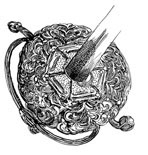
Liturgical Unity & the Crisis of Incongruity
OUT WITH THE OLD?
With the promulgation of Traditionis Custodes, Pope Francis has sidelined the Traditional Latin Mass (TLM). It is now celebrated only at the pleasure of individual bishops, and its use carries restrictions. To some, this seems necessary for the sake of unity in the Church. Despite its relatively small number of adherents, the TLM, some believe, attracts Catholics who are most likely to disobey the current Pope and question the validity of the Second Vatican Council. But Church unity, properly understood, requires acceptance of both the TLM and Vatican II, including the Novus Ordo Mass (NO), which was inspired by the Council and promulgated by Pope St. Paul VI in its wake. The separation between the old and new liturgies has much to do with poorly conceived and implemented liturgical reform following the Council.
In his motu proprio, Francis not only has curtailed use of the TLM, he also has declared that the NO is the one liturgical expression of the Catholic faith. Francis’s main concern is that wider use of the TLM, made possible by his predecessor, Pope Benedict XVI, has exacerbated division in the Church in ways that reach beyond the liturgy. Indeed, Francis’s goal in promulgating Traditionis Custodes was to defend the Second Vatican Council generally. He sees the TLM as a symbol of resistance to the Council. Latin Mass adherents do not simply object to liturgical abuses in the NO; they are often anti-Vatican II holdouts. They question the legitimacy of the entire Council, and the wider availability of the TLM as a result of Benedict’s 2007 motu proprio emboldened them to think that the old Mass eventually would be re-established as the normative Catholic Mass, and the NO left aside as a relatively short-lived (in ecclesial time) and ill-advised experiment. The remedy, in Francis’s view, is to restrict the TLM and try to prevent its growth. The old observance needs to be marginalized until it finally disappears and only the NO remains.
Prior to the pontificate of Francis, Benedict XVI, with Summorum Pontificum, opened the TLM to common use. It was Benedict’s response to the persistent petitions of many faithful who loved the old liturgy and wanted it to be more readily available. In his motu proprio, Benedict made a strong expression of the thesis of the hermeneutic of continuity, holding that Vatican II must be read together with Church teaching from before the Council. The hermeneutic of continuity stands in opposition to the hermeneutic of rupture, whereby the Council is understood, for better or worse, as a break with tradition. The hermeneutic of continuity applies broadly to the question of Church unity and is especially relevant to the liturgy, if only because the liturgy is the “source and summit of the entire Christian faith,” as Sacrosanctum Concilium (SC), Vatican II’s “Constitution on the Sacred Liturgy,” states. The liturgy is, therefore, both the visible sign and driver of unity (or disunity) in the Church.
Moreover, Benedict hoped that the NO and the TLM might begin to ease back together into a single, unified liturgical expression. Thus, he defined the NO as the “ordinary form” of the Roman rite, and the TLM as the “extraordinary form,” emphasizing that these are two expressions of one rite: a single tree with two branches that have grown apart yet are still connected. By officially affirming the TLM, Benedict believed, common use of the old Mass could begin to inform celebrations of the NO and cultivate demand among the faithful for more solemn liturgy. Conversely, with their outsider status removed, TLM adherents would be more open to reform of the old liturgy.
You May Also Enjoy
What was considered the best of various European missals came together in the Pontifical Romanum (1595), which became the norm for the Roman rite.
There is a legend that a thousand years after the birth of Christ, Prince Vladimir…
The Pope's decision to allow women into two “minor orders” of the Church shows how significant change can be instituted incrementally.

